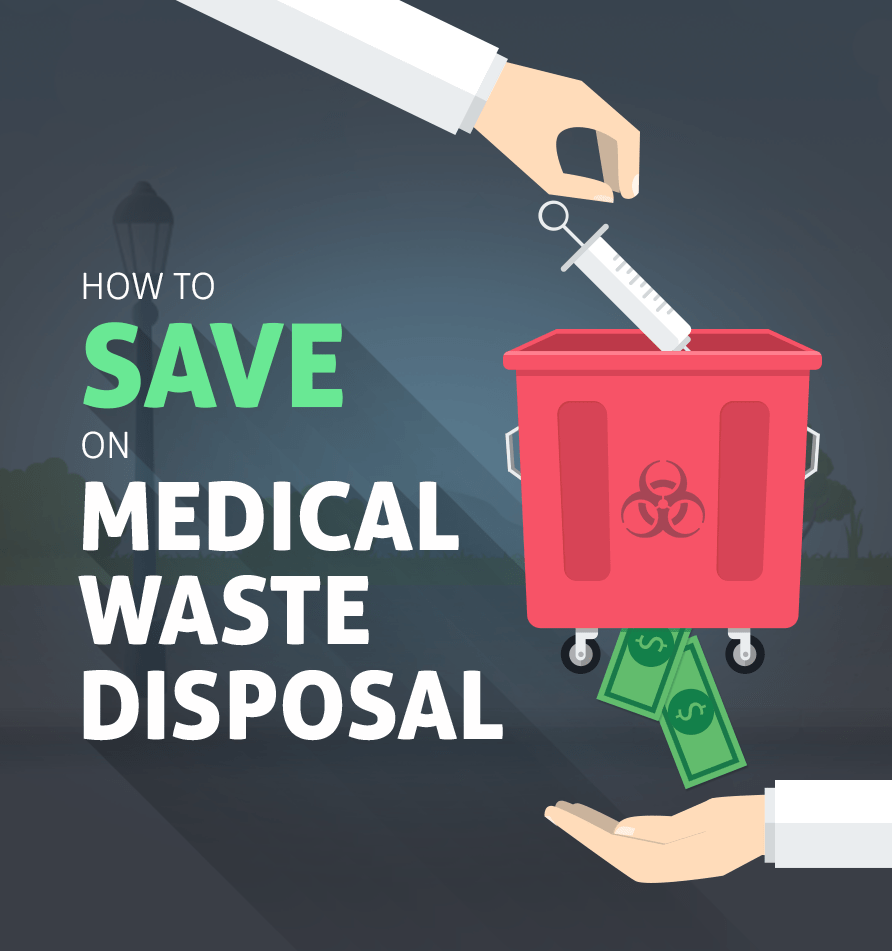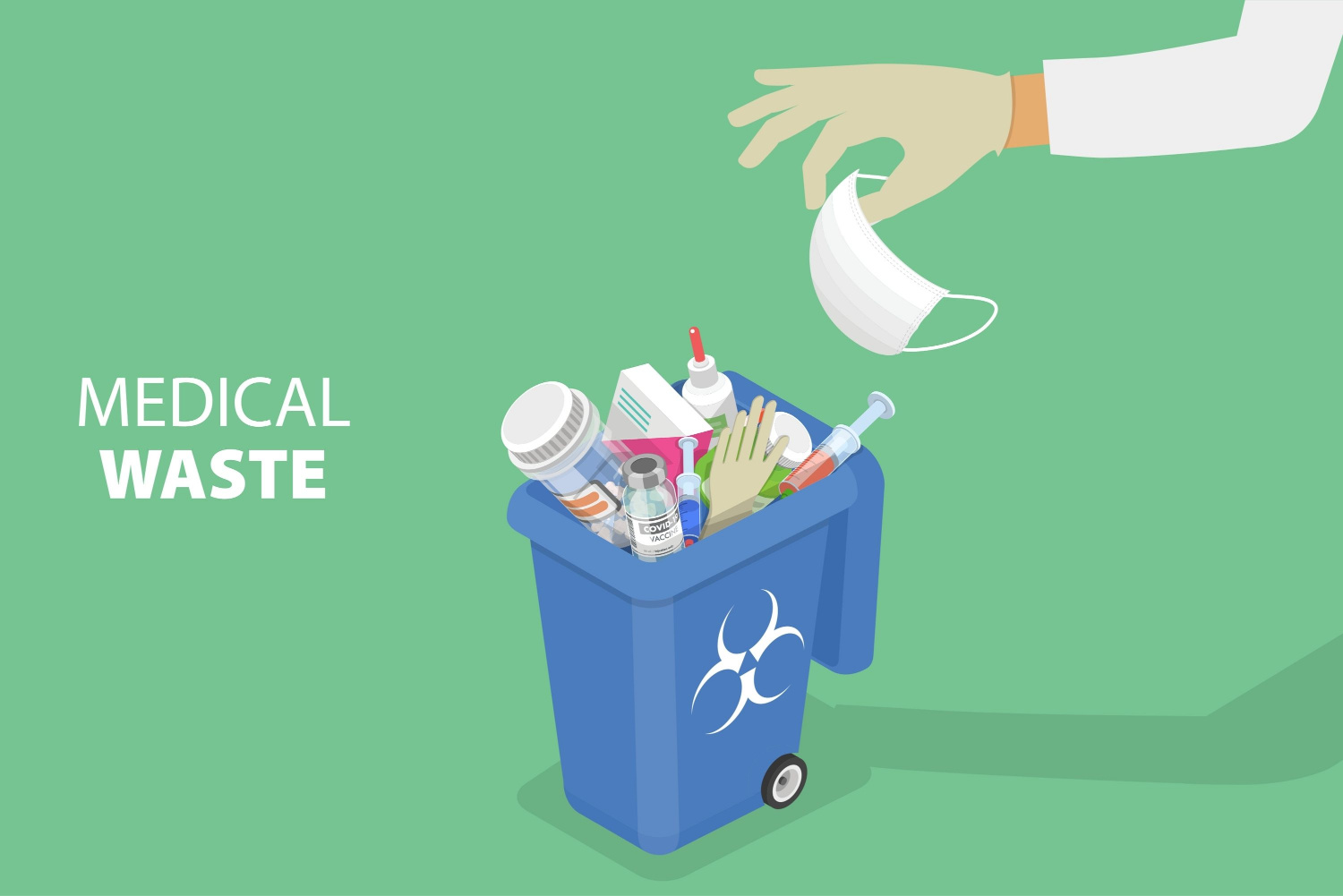Strategic Medical Waste Disposal Solutions: Encouraging Security and Sustainability
Wiki Article
Finest Practices for Medical Waste Management
Medical waste monitoring is a vital aspect of health care centers' operations to guarantee the safety and security of patients, personnel, and the atmosphere. Carrying out ideal practices in medical waste administration is important to decrease the risks connected with contaminated materials. This includes appropriate partition and classification of waste, ensuring its secure storage and labeling, sticking to regulatory standards, and making use of reliable disposal methods. By complying with these best methods, health care centers can lower the possibility for infections, injuries, and contamination triggered by improper handling and disposal of clinical waste. This intro aims to provide a review of the value of finest practices for clinical waste management and the subsequent sections will explore each technique in information - medical waste removal.
Segregation and Categorization
In the area of medical waste administration, appropriate segregation and classification are vital methods for making certain the efficient and risk-free disposal of healthcare-related products. Clinical waste is produced from various sources, including healthcare facilities, centers, laboratories, and various other healthcare centers. It contains a large range of things, such as needles, syringes, bandages, handwear covers, and pharmaceutical waste.Segregation entails the methodical splitting up of different kinds of clinical waste based on their features and potential dangers. Sharps waste, such as blades and needles, should be put in puncture-resistant containers to avoid injuries and the spread of infectious illness.
Classification is the process of classifying medical waste right into different categories based on its prospective hazards. These classifications might consist of infectious waste, unsafe waste, pharmaceutical waste, and general waste. By categorizing waste, health care facilities can determine the appropriate disposal methods and guarantee compliance with regional guidelines and standards.
Appropriate partition and classification of clinical waste not just shield the health and wellness of medical care employees and the basic public yet also add to the total performance and effectiveness of waste monitoring. It lowers the threat of mishaps, decreases environmental impacts, and promotes responsible waste disposal techniques.
Correct Storage Space and Classifying
To ensure the effective and secure disposal of clinical waste, health care facilities must stick to correct storage and labeling techniques. WasteX Medical Waste Disposal. Proper storage and labeling play an important role in preserving the stability of medical waste administration systems and securing the health and wellness of healthcare employees, clients, and the general publicWhen it comes to storage space, it is important to have actually designated areas specifically created for different sorts of medical waste. These locations ought to be safe and secure, well-ventilated, and furnished with proper containers that satisfy governing standards (medical waste removal service). Partition and categorization of waste need to also be taken into account to prevent cross-contamination and possible hazards

Normal surveillance and inspection of storage space locations and containers are essential to identify any issues or offenses. Staff should be educated on correct storage space and labeling practices, stressing the relevance of conformity with policies and procedures.
Safe Transport and Handling
Making sure the appropriate and protected transport and handling of medical waste is critical for keeping the stability of waste management systems and guarding the health and wellness of all involved. Clinical waste, that includes things contaminated with contagious materials, drugs, and other unsafe materials, should be transferred in a fashion that stops leaks, spills, and possible contamination.It is necessary to use leak-proof and puncture-resistant containers that are especially designed for medical waste. Furthermore, waste should be set apart based on its nature and kind to avoid cross-contamination.
During transport, it is very important to make certain that waste containers are securely secured and kept in a secure manner. Automobiles utilized for moving clinical waste should be geared up with suitable security functions, such as spill containment systems, to reduce the danger of any type of leakages or spills. Motorists need to receive training on proper handling and emergency feedback procedures to properly resolve any kind of unanticipated occurrences.
Furthermore, the transportation and handling of clinical waste need to follow all appropriate regulations and guidelines stated by neighborhood, state, and federal authorities. WasteX Medical Waste Disposal. medical waste removal. Normal assessments and audits need to be performed to evaluate compliance and recognize any type of areas for improvement
Conformity With Regulatory Standards
Maintaining compliance with regulative guidelines is vital for effective clinical waste management. These standards are established to shield public health and wellness and the environment by making certain that medical waste is properly managed, treated, and disposed of. Conformity with regulatory standards aids to avoid the spread of infectious conditions, reduce possible threats, and lower the overall effect of clinical waste on the atmosphere.To achieve conformity, healthcare facilities have to stay educated about the particular laws governing medical waste monitoring in their jurisdiction. These policies might vary from country to country, and also within different states or areas. It is necessary for medical care facilities to have a comprehensive understanding of these guidelines and to carry out proper techniques and procedures to ensure compliance.
One secret element of conformity is the appropriate partition and labeling of different sorts of medical waste. This consists of separating sharps from other waste, as well as classifying waste based upon its potential risks. Healthcare facilities should likewise make certain that clinical waste is saved in appropriate containers and that these containers are effectively labeled and sealed.
Furthermore, compliance with regulatory guidelines requires healthcare centers to establish proper training and education and learning programs for personnel associated with clinical waste monitoring. This consists of giving training on waste segregation, dealing with, and disposal treatments, along with the appropriate usage of personal protective devices.
Regular tracking and audits are likewise essential to ensure recurring compliance with governing standards. This includes performing normal inspections of waste storage areas, recording waste administration procedures, and keeping records of waste disposal.
Effective Disposal Methods
Healthcare centers should utilize effective disposal approaches for appropriate monitoring of medical waste. Inappropriate disposal of clinical waste can position significant wellness and ecological risks. There are numerous methods that can be made use of to effectively get rid of clinical waste, making sure the safety of health care workers, people, and the public.One commonly utilized approach is incineration. Incinerators can securely shed clinical waste at heats, reducing the quantity and destroying any type of possibly harmful virus. Incineration can be expensive and might release unsafe contaminants right into the air if not properly managed.
Another technique is autoclaving, which entails subjecting the waste to high-pressure heavy steam. This process kills microorganisms, viruses, and various other microorganisms, rendering the waste secure for disposal in regular waste streams. Autoclaving is a reliable and eco-friendly technique, yet it requires specific tools and trained employees.
Chemical disinfection is also utilized in some cases, where fluid chemicals are related to the waste to sanitize it. This approach is less generally utilized because of problems about the efficiency of chemical sanitation and the potential for chemical residues to pollute the setting.
In addition to these methods, health care centers should also implement correct partition, packaging, and labeling of medical waste to ensure its secure handling and disposal. Regular training and education of personnel on appropriate waste monitoring practices are crucial to maintaining efficient disposal techniques.
Final Thought
In verdict, implementing best practices for medical waste administration is important for making certain the safety and security of health care employees, people, and the setting. By properly categorizing and setting apart waste, saving and classifying it appropriately, guaranteeing risk-free transportation and handling, following regulative guidelines, and utilizing efficient disposal approaches, health care facilities can successfully handle and reduce the risks connected with medical waste. It is important for health care organizations to prioritize and adhere to these best reference techniques to maintain a sustainable and secure medical care atmosphere.Medical waste management is a vital aspect of health care centers' operations to make certain the security of clients, team, and the setting. Applying finest methods in clinical waste administration is crucial to lessen the risks linked with dangerous waste. These classifications might consist of infectious waste, hazardous waste, pharmaceutical waste, and basic waste.In final thought, implementing finest practices for medical waste management is essential for making certain the security of medical care workers, clients, and the atmosphere. By correctly segregating and categorizing waste, keeping and classifying it correctly, making certain safe transport and handling, conforming with governing guidelines, and utilizing reliable disposal approaches, health care facilities can properly manage and minimize the threats linked with medical waste.
Report this wiki page